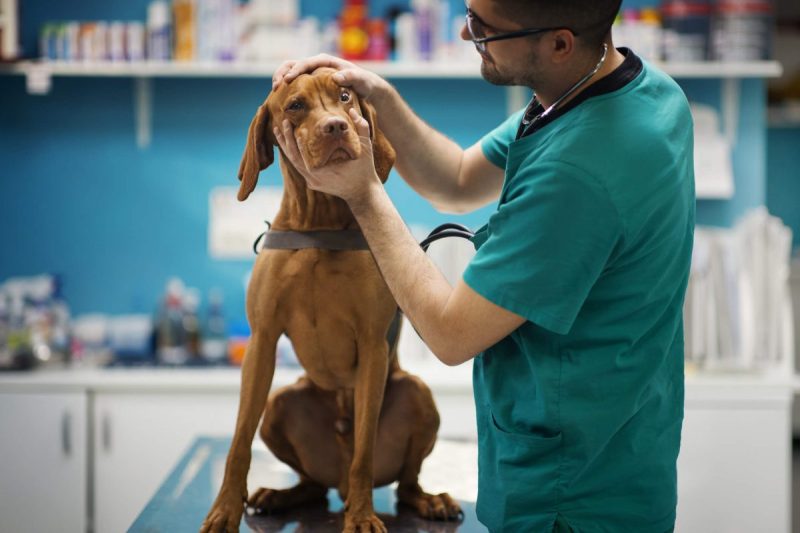Peripheral vitreous degeneration (PVD) is an ocular condition in dogs that affects the vitreous body in the eye. In healthy dogs, the vitreous body retains a stable, gel-like consistency that helps maintain the eye’s shape and provides a clear pathway for light to reach the retina. However, when PVD occurs, the vitreous gel can begin to liquefy or shrink. This can lead to the formation of pockets or spaces within the vitreous body, known as syneresis. In some cases, the vitreous structure may also detach from the retina — a condition known as posterior vitreous detachment.
Here’s what you should know about the symptoms, causes, and treatments for the disease in dogs.
Symptoms of peripheral vitreous degeneration (PVD) in dogs
One of the most common symptoms of peripheral vitreous degeneration is the presence of floaters in the dog’s vision. These floaters appear as small, dark spots or threads that move across the field of vision, caused by tiny clumps of cells or debris within the vitreous gel. While this may not be directly observable, it can lead to changes in how your dog interacts with their environment. Other signs of PVD include:
- Vision impairment
- Eye discomfort
- Changes in eye appearance
- Head tilting or shaking
- Reluctance to climb stairs or jump
- Eye redness or irritation
- Increased clumsiness
- Frequent squinting or blinking
- Sensitivity to bright light
- Increased tear production
Some cases of PVD in dogs can be asymptomatic and are only detected during routine eye exams. This is because noticeable symptoms may not appear until the condition progresses to a later stage.
Causes of peripheral vitreous degeneration (PVD) in dogs
Peripheral vitreous degeneration in dogs is primarily associated with the natural aging process. As dogs age, the gel-like vitreous humor may break down and become more liquefied. This degeneration is more common in older dogs and is considered a normal part of the aging process. Over time, the vitreous body can pull away from the retina, leading to PVD.
Genetic factors may also play a role, as some breeds — like Border Terriers, Poodles, English Springer Spaniels, and Shih Tzus — are more susceptible to developing eye-related conditions, including PVD. In these cases, hereditary components may accelerate the degeneration of the vitreous humor.
In addition to aging and genetic predisposition, environmental factors and certain health conditions can contribute to the development of the condition in dogs. PVD can arise either as a primary condition linked to progressive retinal atrophy (PRA) or as a secondary complication from uveitis, lens luxation, or advanced cataracts. Moreover, systemic diseases such as diabetes mellitus — which can affect blood vessels and tissues throughout the body — may indirectly influence the health of the vitreous structure.
Treatments for peripheral vitreous degeneration (PVD) in dogs
Before seeking treatment for peripheral vitreous degeneration, it’s essential to first obtain an accurate diagnosis from a veterinarian. The vet will typically conduct a thorough eye examination using specialized tools such as an ophthalmoscope or slit lamp biomicroscopy. These methods help visualize the vitreous body and determine the severity of the degeneration. In more complex cases, your vet might recommend advanced imaging techniques like ultrasound or optical coherence tomography (OCT) to gain a detailed view of the vitreous structure and retina.
When it comes to treating PVD in dogs, the options are somewhat limited, as this condition can be difficult to reverse. That said, it is possible to manage any associated symptoms or complications. If the degeneration is mild and not affecting your dog’s vision, regular veterinary check-ups may be sufficient. In contrast, if PVD leads to retinal detachment or other severe issues, surgical intervention might be necessary. A vitrectomy — which involves removing the vitreous gel — is a complex procedure typically reserved for severe cases.
Your vet may also prescribe topical medications, such as anti-inflammatory eye drops, to reduce any swelling or discomfort. Recently, there have been emerging therapies focusing on antioxidants and nutritional support to slow the progression of vitreous degeneration, but more research is needed to validate their effectiveness fully.

